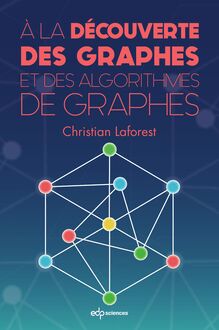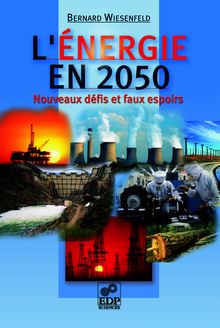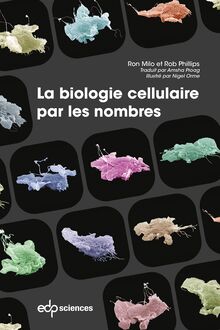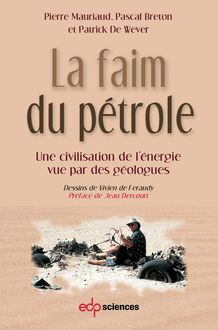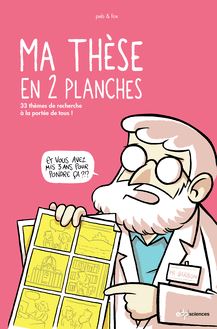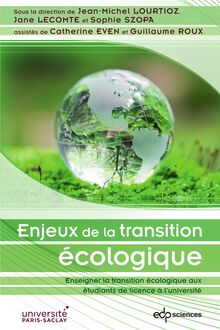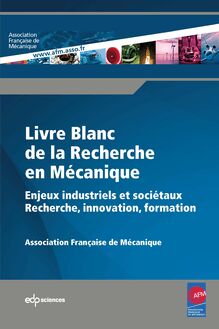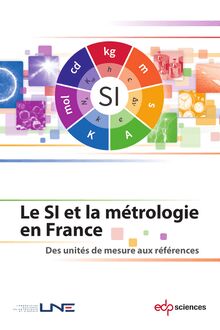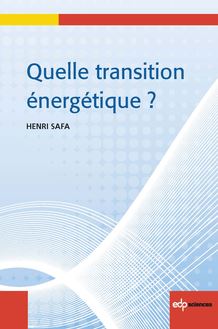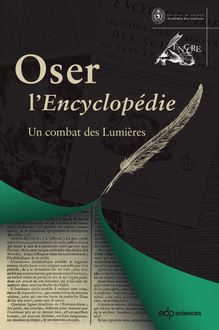Physics in daily life , livre ebook
89
pages
English
Ebooks
2012
Vous pourrez modifier la taille du texte de cet ouvrage
Obtenez un accès à la bibliothèque pour le consulter en ligne En savoir plus
Découvre YouScribe en t'inscrivant gratuitement
Découvre YouScribe en t'inscrivant gratuitement
89
pages
English
Ebooks
2012
Vous pourrez modifier la taille du texte de cet ouvrage
Obtenez un accès à la bibliothèque pour le consulter en ligne En savoir plus
Publié par
Date de parution
01 mars 2012
Nombre de lectures
0
EAN13
9782759810512
Langue
English
Poids de l'ouvrage
4 Mo
Finally the Europhysics News columns, "Physics in Daily Life", are brought together in one inspiring volume. These pages hold the wonders of a candle flame, the secret of surviving the sauna heat, and the mysteries of bubbles and balloons. Find answers to questions like "Why is water blue? How do we localize sound? Why is ice so slippery?" and "What is the speed of falling raindrops?"
For everybody with a bit of physics background this book playfully reveals insights into everyday conundrums. This is science at its most accessible and satisfying.
Publié par
Date de parution
01 mars 2012
Nombre de lectures
0
EAN13
9782759810512
Langue
English
Poids de l'ouvrage
4 Mo
ISBN : 978-2-7598-1051-2
© EDP Sciences, 2012
Ce document numérique a été réalisé par Nord Compo
ABOUT THE AUTHORS
P rof. L.J.F. Hermans is Emeritus Professor of Physics at Leiden University, The Netherlands. In addition to his academic teaching and research career he was quite active in promoting and explaining science for the general public. In this context he published, among others, a book about Every-day science (in Dutch) and two books about Energy (in Dutch and English). He is presently Science Editor of Europhysics News. He was appointed Knight in the Order of Oranje Nassau by Queen Beatrix in 2010.
Wiebke Drenckhan is CNRS researcher at the Laboratoire de Physique des Solides at the outskirts of Paris, where she tries to unravel the physical properties of soft materials, such as foams or emulsions. In her spare time she finds great pleasure in letting scientific issues come to life with pen and paper in the form of illustrations or cartoons.
CONTENTS
Couverture
Titre
Copyright
About the authors
Foreword
1 - The human engine (and how to keep it cool)
2 - Moving around efficiently
3 - Hear, hear
4 - Drag’n roll
5 - Old ears
6 - Fresh air
7 - Diffraction-limited photographs
8 - Time and money
9 - Blue skies, blue seas
10 - Cycling in the wind
11 - Seeing under water
12 - Cycling really fast
13 - Water from heaven
14 - Surviving the sauna
15 - Black vs. white
16 - Hearing the curtains
17 - Fun with the setting sun
18 - NOT seeing the light
19 - Thirsty passengers
20 - The sauna – revisited
21 - Refueling
22 - Counting flames
23 - Drink or drive
24 - Feeling hot, feeling cold
25 - The way we walk
26 - Wine temperature
27 - Over the rainbow
28 - New light
29 - Windmill nuisance
30 - Fog and raindrops
31 - Why planes fly
32 - Heating problems
33 - Bubbles and balloons
34 - Funny microwaves
35 - Brave ducks
36 - Muddy cyclists
37 - Flying(s) low
38 - Funny ice
39 - Amazing candle flames
40 - Capricious sun-time
Collection
FOREWORD
T he history of Physics in Europe is one of brilliance and the sun is still shining, indeed it is getting ever brighter, despite the economic problems. The European Physical Society is a composite of all the national physical societies and it occupies an important role in providing advice to its members and a forum for discussion.
Its house journal, Europhysics News , is an exciting small publication, packed with interesting articles about conferences, national societies, highlights from European journals and ‘features’. In addition there has been, for the past decade, a page entitled ‘Physics in Daily Life’. The present volume is a collection of these pages and is a feast of erudition and humour, by way of the excellent accompanying cartoons as well as the subject matter.
It is easy for those of us steeped in our disciplines, of astrophysics, condensed matter, nuclear physics, or whatever, to think that ‘everyday physics’ is child’s play compared with the deep subtleties of our chosen subjects. Surely, if we can understand the mysteries of parallel universes, the behaviour of superconductors or exotic atomic nuclei, the V-shaped pattern of a duck’s wake in the lake at the local Wildfowl Park will be a ‘piece of cake’. However, it would be wise, before telling ones child/grandchild/lady or gentleman friend or… to read the contribution ‘Brave Ducks’ herein. Quite fascinating…
In a similar vein, the Astrophysicist who knows all about the recently found bubbles in the interstellar medium just outside the heliopause, and the Local Bubble in which the solar system is immersed, had better read the ‘Bubbles and Balloons’ piece before setting himself or herself up as an authority on such matters at the next Christmas Children’s Party.
Michael Faraday, that physicist of genius, whose discoveries led to the electrical power industry amongst many other things, lectured for one hour on the physics and chemistry of the candle flame. He probably knew the points made in ‘Amazing Candle Flames’ (contribution number 39) but I didn’t. Henceforth, my over-dinner description of the candle flames at the table will be the envy of my guests – even the physicists and chemists amongst them (unless they happen to belong to the EPS).
Turning to our activities on the high seas, where many of us use our SKI funds (‘Spending the kids’ inheritance’) to take exotic cruises, we have the oft-sought ‘green flash’ from the sun as it sinks below the horizon. Wearing our tuxedos and leaning over the rail with our new-found friends, we have languidly explained what we should have seen as the sun gently disappeared (only occasionally does it make an appearance). Beware, however, your explanation may not be quite right – ‘Fun with the setting sun’ (contribution number 17) will put you right. Even one’s description of why the sea sometimes looks blue may turn out to have been wrong ! Better to take with you an absorption curve for water, from 400-700 nm, to nonchalantly fish out of your pocket at the appropriate moment.
Now to taxi-drivers, most are sources of information, freely imparted, and their views are strongly held. In order to keep one step ahead it would be wise to dip into our compendium and produce such gems as ‘Hearing the Curtain’ (contribution number 16) which relates to the reason why we all like to sing in the bath. The driver will be enthralled when you explain that the sound absorption properties of the curtains are the same whether they are drawn shut or quite open. Indeed it may lead to some interesting descriptions of sights that the taxi driver himself has witnessed during his late night excursions.
So, what about this collection ? For me, at least, it scores 10/10 and I recommend it to all who have an interest in the physical world and explanations of what seem to be – but are often not – simple phenomena. Not only that, but buy it for your friends and relatives.
Arnold Wolfendale
( Sir Arnold Wolfendale FRS is a Past-President of the EPS. He is emeritus Professor of Physics in Durham University, UK )
1
The human engine (and how to keep it cool)
W e don’t usually think of ourselves in that way, but each of us is an engine, running on sustainable energy. It differs from ordinary engines in more than just the fuel. The human engine cannot be shut off ; for instance, it keeps idling even if no work is required. This is needed to keep the system going, to keep our heart pumping, for example, and to keep the temperature around 37 °C. Because – and here is another difference – our human engine works in a very small temperature range.
It’s interesting to look at this a bit more quantitatively. Our daily food has an energy content of 8 to 10 MJ. That, incidentally, is equivalent to a quarter of a litre of gasoline, barely enough to keep our car going on the highway for about 2 minutes. Those 8 to 10 MJ per day represent just about 100 W on a continuous basis. Only a small fraction is needed to keep our heart pumping, as we can easily estimate from a pΔV consideration (p being on the order of 10 kPa and ΔV on the order of 0.1 litre, with a heart beat frequency of around 1 Hz).
In the end, those 100 W are released as heat : by radiation, conduction and evaporation. Under normal conditions, sitting behind our desk in our usual clothing in an office at 20 °C, radiation and conduction are the leading terms, while evaporation gives only a small contribution. But when we start doing external work, on a home trainer, for example, the energy consumption goes up, and so does the heat production. Schematically, the total energy consumption P tot vs . external work P work is shown in the figure, where an efficiency of 25% has been assumed. Thus, if we work with a power of 100 W, we increase the total power by 400 W, and the heat part P heat by 300 W.
Now our body must try to keep its temperature constant. That’s not trivial : if we don’t change clothing, or switch on a fan to make the temperature gradients near our skin somewhat larger, the radiation and conduction terms cannot change much. They are determined by the difference between the temperature of our skin and clothing on the one hand, and the ambient temperature on the other. When working hard, we increase that difference only slightly. Granted, due to the enhanced blood circulation, our skin temperature will get closer to that of our inner body, but the limit is reached at 37 °C.
Fortunately, there is also the evaporation term. Sweating comes to our rescue, as also, of course, does drinking ! Each additional 100 W of released heat that has to be compensated by evaporation requires a glass of water per hour (0.15 litre, to be more precise). The various terms are schematically shown in the figure.
One conclusion : heavy exercise requires evaporation. Don’t try to swim a 1000 m world record if your pool is heated to 37 °C. You might not live to collect your prize, because where would the heat go ?
Image 1.1 | Total energy production, heat production and heat release vs . external mechanical power, schematically.
2
Moving around efficiently
E ver considered the efficiency of a human being moving from A to B ? Not by using a car or a plane, but just our muscles. Not burning oil, but food.
Many physicists will immediately shout : A bike ! Use a bicycle ! It is because we all know from experience that using wheels gets us around about five times as fast as going by foot with the same effort.
But just how efficient is a bike ride ? First, we have to examine the human engine. The power we produce is easily estimated by climbing stairs. If we want to do that on a more or less continuous basis, one step per second is a reasonable guess. Assuming a step height of 15 cm and a mass of 70 kg, this yields a power of roughly 100 W. Mountain climbers will find the assumed vertical speed quite reali
